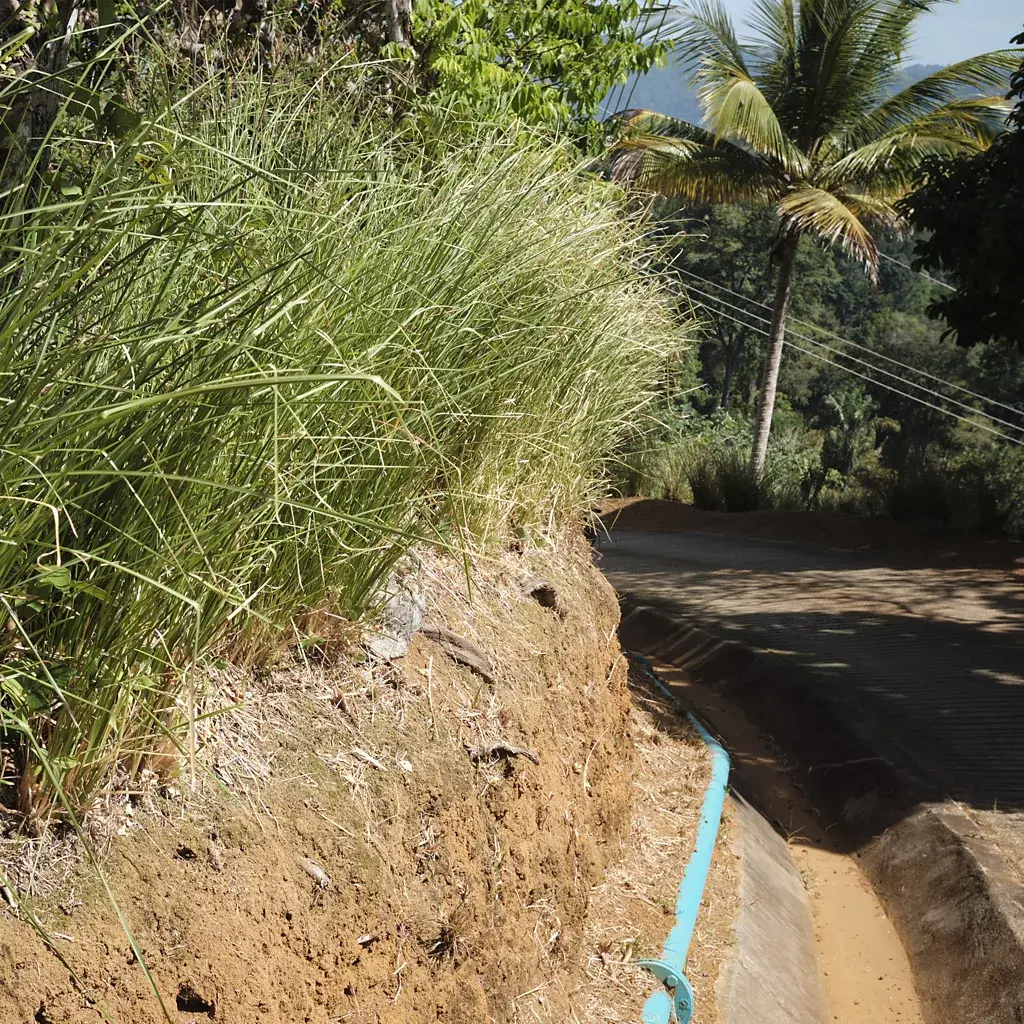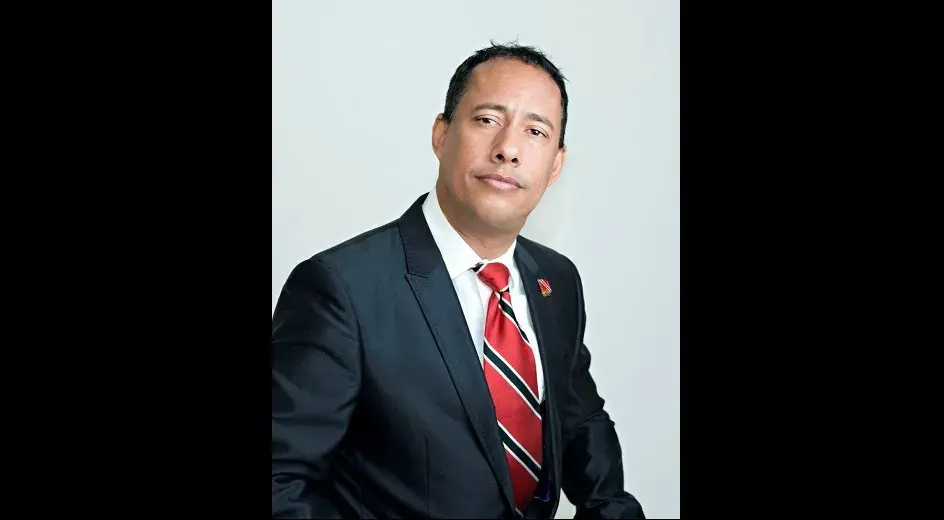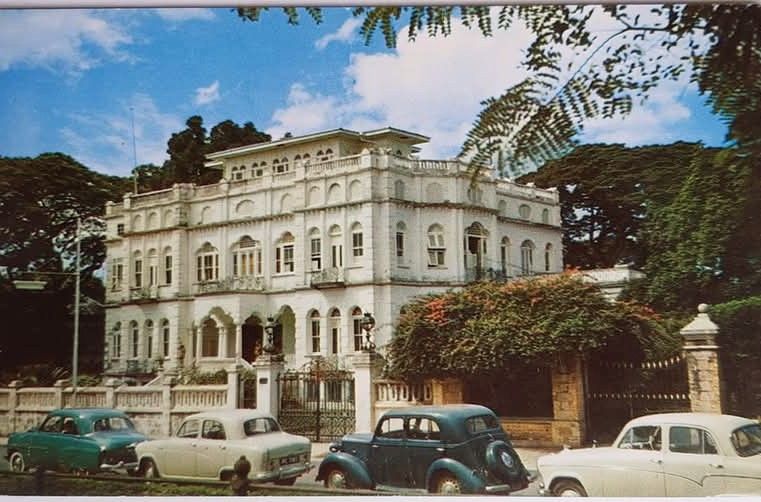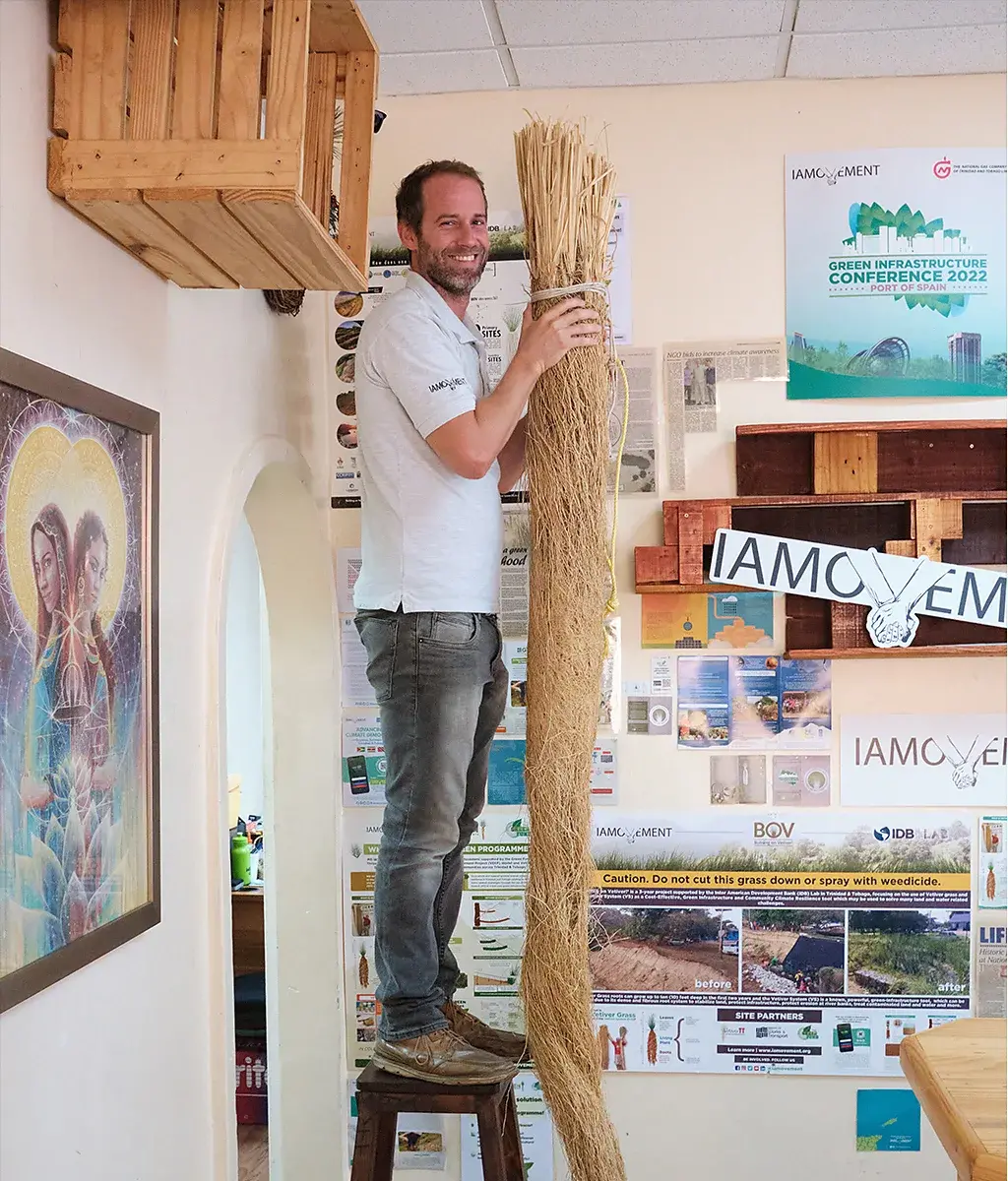|
The National Transformation Alliance (NTA) said Gary Griffith has resigned as leader of the political party.
In an update earlier today, the NTA said: “The National Transformation Alliance (NTA) wishes to officially inform the public, our supporters, and the national community that our Political Leader, Gary Griffith has tendered his resignation, effective immediately. This decision, though deeply significant, was made with thoughtful reflection and in the spirit of accountability and integrity that has always guided the NTA’s leadership. “Alongside the resignation of the Political Leader, several members of the Governance Team have also stepped down from their respective positions. “We extend our sincere gratitude to all of them for their service, dedication, and contribution to building the foundation of this movement.” In light of these developments, the NTA said Deputy Political Leader Commander Norman Dindial has agreed to assume the role of Interim Political Leader, ensuring continuity and stable leadership during this period. The group said internal elections for all governance team positions are scheduled to take place on Friday, September 5, 2025. The party said the party remains committed to people-centred leadership. “These changes mark a moment of transition — not of dissolution, but of renewal. The NTA remains firmly committed to the principles on which it was founded: people-first leadership, transformational governance, and a future-focused agenda for Trinidad and Tobago. “These interim measures will ensure the uninterrupted functioning of the organisation during this time. “We encourage our members, supporters, and the wider public to remain engaged. This is not the end of a chapter, but the beginning of a new one — driven by reflection, responsibility, and the enduring belief that Trinidad and Tobago deserves better. “We remain dedicated to serving the people of Trinidad and Tobago with vision, transparency, and unwavering purpose.”
0 Comments
Each year in May, we shower our mothers with flowers, gifts, and gratitude but how much do we really know about the origins of Mother’s Day? Beyond the greeting cards and brunches lies a rich and sometimes surprising history.
Here are six fascinating facts about Mother’s Day that might just change how you see this heartfelt holiday. 1. Mother’s Day has ancient roots Although the modern celebration of Mother’s Day as we know it began in the early 20th century, the idea of honouring mothers dates back thousands of years. Ancient civilizations such as the Greeks and Romans held festivals dedicated to mother goddesses Rhea and Cybele celebrating motherhood and fertility. These festivals involved offerings, feasts, and rituals to honour maternal figures. 2. The modern Mother’s Day was started by a peace activist The Mother’s Day we know today was championed by Anna Jarvis in the early 20th century. After her own mother’s death in 1905, Jarvis campaigned to create a national holiday to honor mothers for their service and sacrifice. Interestingly, her mother, Ann Reeves Jarvis, had organized “Mother’s Day Work Clubs” to improve health and sanitation, and even promoted peace after the Civil War. 3. Mother’s Day was initially a religious observance Before becoming a secular holiday, Mother’s Day was originally a religious observance. In the United States, it was linked to church services and prayer. Anna Jarvis herself wanted Mother’s Day to be a day for churchgoing, prayer, and quiet reflection on the importance of motherhood, rather than commercial festivities. 4. Anna Jarvis later fought against the holiday’s commercialization Ironically, Anna Jarvis grew to despise the very holiday she helped create. She was dismayed by the commercialization of Mother’s Day greeting cards, floral arrangements, and candy sales felt like an insult to the sincerity she intended. She even filed lawsuits and organized boycotts, hoping to return the holiday to its original purpose. 5. Mother’s Day became official in 1914 After years of campaigning, Anna Jarvis finally saw her dream realized when President Woodrow Wilson signed a proclamation in 1914, declaring the second Sunday in May as Mother’s Day in the United States. It quickly gained popularity and was adopted in various forms around the world. 6. It’s celebrated differently around the world Although the sentiment is universal, Mother’s Day is celebrated on different dates and in unique ways across the globe. In Ethiopia, families gather for a multi-day festival called Antrosht, filled with food, dancing, and storytelling. In Thailand, Mother’s Day is observed on August 12, the birthday of Queen Sirikit, and includes parades and public ceremonies. White Hall, originally called Rosenweg, the largest of the private homes on Maraval Road, was built in 1904 by Joseph Leon Agostini, a cocoa planter. Construction commenced in 1904 in accordance with Mr. Agostini’s own design, influenced by a Moorish Mediterranean style and reminiscent of the architecture of Corsica from where the Agostini family originated. Construction took three years.
After J. L. Agostini's death in 1906 his family remained in residence until 1910. Unable to meet mortgage payments, the mortgagee, William Gordon Grant, foreclosed. Thee property was then sold to Mr. Robert Henderson, an American businessman from Venezuela. During his ownership, a delightful variety in the furnishings of the interior was added to the refined dignity of the exterior. The Henderson family renamed it White Hall after the white coral stone from which it is built. During the Second World War, with the arrival of the United States Forces in Trinidad, White Hall was commandeered from the Siegert family, heirs of Robert Henderson, as the headquarters of the Air Raid Precaution. In 1944, the British Council rented the building as a cultural centre. Later, the Trinidad Central Library, Regional Library, National Archives, Government Broadcasting Unit, Trinidad Art Society and the Cellar Club all rented or occupied space in the building. From 1949, the building remained empty until 1954, when it was purchased by the Government of Trinidad and Tobago. In 1957 White Hall was occupied by the Pre-Federal Interim Government prior to the establishment of the West Indies Federation in 1958. In 1963, it became the Office of the Prime Minister occupied by the Hon. Dr. Eric Williams, Trinidad and Tobago's first Prime Minister after Independence. Restored in 2000, White Hall continued to be occupied by the Office of the Prime Minister of the Republic of Trinidad and Tobago until 2009. Further restoration was completed in August 2019 . (Source: Angelo Bissessarsingh's Virtual Museum of Trinidad and Tobago, May 10, 2025. Credit to author Geoffrey MacLean) Oshéa Cummings celebrates with her gold medal after winning the U-17 1,500 metres at the Carifta Games on April 20th, 2025 in Port of Spain, Trinidad. Photo: NAAATT Trinidad and Tobago’s junior athletes wrapped up their campaign at the 2025 Carifta Athletics Championships on home soil with a total of 25 medals.
Over the course of three days, the athletes secured nine gold, six silver, and ten bronze medals—just shy of last year’s tally of 27 (four gold, 11 silver, and 12 bronze). Trinidad and Tobago’s best finish at the regional athletics championships came in the 2005 edition, held in Tobago, when the team captured 13 gold, 14 silver, and nine bronze medals. Jamaica finished atop the medal table with 78 medals, including 30 golds, while The Bahamas claimed 37, mirroring last year’s top three standings. Some standout performances for Team TTO included Christopher Sammy, who claimed gold in the Boys Under-17 1,500 metres and 3,000 metres. Tobagonian junior distance runner Oshéa Cummings won gold in the Girls Under-17 1,500 metres and bronze in the 3,000 metres. Tyrique Vincent made history by becoming the first Carifta champion in the Boys Under-20 decathlon. He amassed 6,522 points across ten events, narrowly edging out Grenada’s Jurel Clement, who earned 6,510 points for his efforts. Vincent’s sister, Tenique, also delivered a strong performance, winning the Girls Heptathlon Open with a total of 4,019 points. Dylan Woodruffe stormed to a silver medal in the Boys Under-20 100 metres, clocking a personal best of 10.30 seconds. In the 4×100 metre relays, Trinidad and Tobago earned three bronze medals and one silver. (Source: The Loop, April 22, 2025) Ahead of hurricane weather, vetiver is stabilising this Caribbean island's crumbling hillsides4/30/2025 Jonathan Barcant, founder of the IAMMovement nonprofit, poses with dried vetiver root in his office in Trinidad (Credit: Damir Ali)  The Caribbean is bracing itself for an intense hurricane season. A fragrant plant could help limit damage from extreme weather in Trinidad. In the early hours on a Saturday morning, deep into the dry season, Mary Romany-Constantine makes her way down the steep hills of Paramin – a village on the northern coast of the Caribbean island of Trinidad – to a farmer's market in Diego Martin, with her wares in tow. Homemade wines, bars of soap, bundles of fragrant roots, all displayed on delicately woven mats and in decorative baskets – also for sale. Romany-Constantine makes this wide variety of items all from a single plant that is now responsible for protecting much of the hilly land across Paramin. Its unique root system can function like a retaining wall for areas prone to land slippage when it is planted correctly. Around the world it is known as vetiver grass, but in Paramin the older residents who grew up using the plant call it "metiver". The hillsides of the agricultural community are covered in beds of aromatic "green seasoning": chives, thyme, basil, parsley, mint, rosemary. But the roots of these plants are no match for the heavy rains of the June to December wet season, and every year communities like Paramin lose precious fertile topsoil to erosion and landslides. While locals give anecdotal information on the damage done over the years, there's a dearth of research on exactly how severe the problem is. "Whenever we had a lot of rain, the farmers would have landslides and would lose some of their crops," says Romany-Constantine. She says she has long been connected to the greenery around her. In her garden, she grows perfumed vetiver, which is able to withstand the extreme weather that the islands are facing – primarily heavy rainfall which leads to flooding and landslides. Climate change is dramatically increasing the risk of powerful hurricanes in the Caribbean and the region is currently bracing itself for a super-charged season. Early forecasts are estimating that 2024's Atlantic hurricane season could be among the most active on record. The islands of Trinidad and Tobago lie on the edge of the "hurricane belt" and hurricanes rarely make landfall, but the islands are vulnerable to increased flooding and hillside erosion. Flash flooding and above-normal rainfall is predicted for this year. The most destructive hurricanes to hit the Caribbean Hurricane Maria, 2017: Maria hit Puerto Rico and the Lesser Antilles while they were still recovering from Hurricane Irma, killing more than 3,000 people and reaching windspeeds of up to 175mph (280 km/h). Hurricane Ike, 2008: Flooding and mudslides killed 74 people in Haiti and two in the Dominican Republic. Hurricane Wilma, 2005: Wilma killed 22 people across the Caribbean and caused $16.8bn (£13.2bn) in damage. Hurricane David, 1978: David caused more than 2,000 deaths and $1.54bn in damage. Waves as high as 30ft (9.1m) were recorded and mudslides killed hundreds. For the past decade, the Paramin community has been working with IAMovement, a local non-profit organisation, to enable young people to plant vetiver along vulnerable hillsides to help protect the land from the flooding and landslides that come with more extreme weather in the rainy season. Non-native, but not invasiveVetiver grass itself is not native to the Caribbean, although there is anecdotal evidence of it growing here for at least the past 50 years. The plant is endemic to India, but the more commonly used types of vetiver have been introduced into many tropical countries, where it can thrive without becoming invasive – it requires human intervention to spread. When removed from the ground, the fragrant roots can be used to produce an oil for perfumes and cosmetics or woven into mats and other crafts. But in the ground is where the plants really shine. The word vetiver comes from the Tamil word vettiveru, meaning "root that is dug up" – and it is the vetiver roots that make it such a vital tool for soil protection and rehabilitation. A study on vetiver use in Australia and South Africa found the plant to be highly effective for land stabilisation and for revegetation of contaminated sites due to its tolerance for "extreme soil conditions including heavy metal contaminations". Instead of building a wall I’m going to plant vetiver – Mary Romany-ConstantineThe fibrous roots are thick when mature, and can extend down to 3m (10ft) deep within two years of planting – eventually reaching over twice that depth in suitable conditions. A hedge of vetiver creates a network of roots holding the land in place. The roots are incredibly strong. A study published in 1996 measured the tensile strength – the maximum stress a material can bear before breaking – of vetiver roots, with the average root strength being about one third of the tensile strength of steel. The roots also have the added impact of strengthening the soil that surrounds the roots. Rehabilitating the landscapeFor Jonathan Barcant, founder of IAMovement, the high rate of land slippage in Paramin – and the community's historical use of vetiver grass – made this community the ideal space to launch the vetiver education and planting programme. "I was desperately looking for green solutions," he says. Barcant, who hails from the nearby town of Maraval and previously worked as an engineer on mining projects, found himself overwhelmed after witnessing the destructive impact the industry had on the environment around it. Barcant's work involves rehabilitating the land that has been damaged by quarries, where vetiver can be planted to help make the soil more fertile for less hardy plants that are native to the region, unlike vetiver. Barcant's project has already seen success. The initiative is currently engaging community members from the Turure area of Sangre Grande, where quarrying has left land in need of remediation. The participants learn how to work with vetiver grass, sargassum seaweed for mulching, and reforestation with native trees to rehabilitate the landscape. The IAMovement's "Me We Green" programme has helped establish over 158,0000 vetiver plants in nine communities across the country. Romany-Constantine is one of several residents involved in Barcant's vetiver project. She hopes to use the plant to stabilise the land around her house. "It makes such a difference," says Romany-Constantine. "It's been helping a lot of people… It actually works like a wall – where I'm building my house, instead of building a wall I’m going to plant [vetiver]." The grass also helps water from rainfall to infiltrate the soil more widely rather than just flowing over the top of the land and taking the top layer of soil with it. A 2019 study in Ethiopia found that the tight mesh of a vetiver root system slows water flow and helps it to seep deeper into the soil. For Aidan Farrell, senior lecturer in plant physiology at the University of the West Indies, St Augustine Campus, vetiver is one of several plant "tools" that can help alleviate the issues of flooding and erosion on a smaller scale. "The scientific community is on the lookout for these nature-based solutions more than ever when it comes to climate change," says Farrell. "As a solution, [vetiver] is more of a limited scale – it's not a whole habitat; it's one species." Trinidad and Tobago is slipping into the hurricane …There could be massive destruction in the country – John Agard The importance of protecting slopes matters not only to the people who live there, but also the communities in the nearby valleys. "Areas such as Port of Spain are surrounded by slopes where the native vegetation has been removed," says Farrell. He notes that flash flooding and landslips have been associated with extreme weather like tropical storms making landfall in Trinidad. "Restoring vegetation would help retain moisture in the soil and hold the soil together, reducing the risk of flooding and landslides." But solving the problem requires ongoing care, says Farrell. "Planting is easy, but keeping healthy vegetation throughout the tropical dry season is difficult." Holding up the communityAnother of Barcant's projects works with communities in Laventille, a town just outside the capital city of Port of Spain. Unlike the rural Paramin, Laventille is a densely populated area. Jennifer Cumberbatch, a long-time Laventille resident, watched as the house where she was raised collapse and slid down the hillside. "From childhood growing up, that area used to slip," she says, adding that underground springs nearby made the soil unstable. In 2022, the entire side of the hill fell away. After the landslip, Cumberbatch says, her daughter did some research and found out about IAMovement's local "Me We Green" programme. While on a site visit to Cumberbatch's house, Barcant is shown the remains of a road nearby, which is now a thin strip of asphalt with two gouged-out cliffs on either side. While the land around Cumberbatch is falling away, the slopes around her plot is holding firm with curving rows of dense vetiver. The first batch of over 700 vetiver plants took about an hour or two to plant, with the Cumberbatch family working the soil alongside four members of the IAMovement team. Within four months, they had a flourishing row of hedges. Not all vetiver planting projects are a resounding success. Further north, Mary Romany-Constantine's sister Julie, known to family and friends as Erlyn, has also been a part of the vetiver planting programme. The mountain wall overlooking her house is layered with thin vetiver. But unlike the hearty bushes at other locations, these have not grown as full. Because of their position on the mountainside, they are shaded from the sun for most of the day. This is one of the limitations of working with vetiver – Barcant notes that he has observed the grass needs a great deal of direct sunlight to thrive. For it to be an effective solution, it needs to be planted in a structured manner to achieve the underground root wall effect provided by the hedgerows. In addition, vetiver growth can be slow. In situations where a piece of land is in urgent need of support, Barcant says, it may be better to use other options like a retaining wall, as the plants need at least two years to grow to an effective depth. Shifting hurricane pathsLike many of the mountainous parts of Trinidad and Tobago, Paramin has always been susceptible to the landslides and soil erosion that accompany the region's rainy season, although data on exactly how affected the area has been is sparse. Romany-Constantine recalls how farmers across the hillsides have lost many crops over the years to landslips. As climate change alters the Caribbean's rainy season, solving this issue becomes more urgent. The Caribbean Regional Climate Centre has noted that this year could see an intense wet season. Trinidad and Tobago's position just outside of the main passageway for hurricanes has offered some protection. Though hurricanes have only made landfall in Trinidad and Tobago twice in recorded history, the devastation was intense. Hurricane Flora hit in 1963, and subsequently destroyed 2,750 of Tobago's 7,500 houses, caused massive landslides, felled 75% of Tobago's trees, and killed 20 people across the two islands. But the climate crisis may be altering that trajectory, according to John Agard, professor of tropical island ecology at The University of the West Indies. Hurricanes thrive on warmer waters, and climate change affects sea-surface temperatures across the globe. "Trinidad and Tobago is slipping into the hurricane zone because of heat development," says Agard. "There could be massive destruction in the country." Habitat-wide restorationUltimately, to see a widespread rehabilitation of Trinidad's landscapes, Farrell stresses it is important to look to large-scale reforestation of native vegetation. Farrell points to the success of the country's other main island, Tobago, and the effect of protecting the Main Ridge Forest Reserve, a mountainous forest across the spine of the island and the oldest legally protected forest reserve in the world. Walking through one of the trails across the reserve, you can feel the difference in moisture – the soil is damp even during the scorching dry season affecting the rest of the island this year. According to Farrell, this protection means older, more resilient root systems across the ridge, which help protect the land from landslides in the rainy season and forest fires in the dry. He says that in the mountains of Trinidad's northern range, where large swathes of tree cover have been removed, replanting is vital to rehabilitating the landscape – and vetiver is just one of many tools in a wider arsenal. As the islands prepare for the possibility of intensified wet seasons and perhaps a future of hurricanes reaching the shores of Trinidad and Tobago, it is important that community projects like this one work in tandem with a range of other nature-focused responses to the issues surrounding climate change, says Farrell. "People are looking for nature-based solutions," he says. "That includes bringing agroforestry intro agriculture, maintaining mangroves on the coast to avoid coastal erosion, and trying to maintain native forests." With such incredible biodiversity at their fingertips, he says, that the island has many natural tools to reach for, and vetiver is just one of them. (Source; BBC.com, June 2024) Members of the Caricom election observer mission advance team: Irvin Brown, Shae-Alicia Lewis, deputy chief Dora James, chief Ian Hughes, Angella Prendergast and Serojnie Seetaram. - Photo by Paula Lindo DESPITE the general absence of major issues in past elections, the early request of former prime minister Dr Rowley to Caricom and the Commonwealth to deploy an independent observer presence in the April 28 election was sound and sensible. The opposition had made repeated calls for independent observers.
In all, three requests were made by the sitting government for election observers, with missions from Caricom and the Commonwealth. The Carter Center was unable to deploy a mission. Both missions have been active since arriving in the country. In its first two days on the ground, the Caricom observer mission had met with the UNC, the Elections and Boundaries Commission (EBC), the Prime Minister, the PNM, the NTA and civil society groups as an opening act. The eight-member Caricom team is led by Ian Hughes, the supervisor of elections in Antigua and Barbuda. The Commonwealth observers are led by Evarist Bartolo, former foreign affairs minister for Malta and includes Guyanese journalist Nazima Raghubir. The teams began their familiarisation discussions with representatives of political parties and the EBC, as well as the media, soon after their arrival in TT. Already, a minor hiccup involving a voting box for special voters in San Fernando East caused enough concern that international bodies overseeing the electoral process would provide useful assurances that this country's normal voting process accurately reflects the will of its electorate. The UNC has taken its running concerns about the EBC to mission observers who have been measured in their responses. The two observer missions will formulate their own strategies for observing the 12 hours allocated for voting, but they have a lot of ground to cover. The Aranguez/St Joseph electoral district alone has 19 separate polling stations, and larger, more sparsely populated districts will have polling stations established at some distance from each other. This is a hotly contested election. While much of the most visible fire has been brought to the campaign by the sitting PNM and opposition UNC, a total of 161 candidates have offered themselves to voters across 17 political parties, though five parties are represented by a single candidate and three are independents. In this electoral space, there is a brewing storm of disinformation, vandalism, and political dirty tricks, but it is the polling process, the procedures at voting booths, and the tabulation of votes that are paramount on Monday. Election observer missions normally operate when the electoral process is considered credible and sound. The impact of observers and their eventual report is nuanced and subtle. Observers cannot see everything, but they will offer a perspective that is unequivocally untainted by party affiliation or loyalty, and their reports will be an important addition to the 2025 election. The presence of independent observers providing oversight underlines this country's commitment to a fair, transparent democratic process. (Source: Newsday, April 26, 2025) Calypso Rose, Born McCartha Linda Sandy-Lewis on April 27, 1940, in Bethel Village, Tobago. She started writing songs at the age of 13& has composed more than 1000 songs and recorded more than 20 albums. Considered the “mother of calypso”, Rose was the FIRST female calypso star and her lyrics frequently address social issues like racism and sexism. Her influence over the calypso music genre forced the renaming of the Calypso King competition to the Calypso Monarch instead. In addition to writing songs about social issues, Rose is also an activist and was given the title of UNICEF Goodwill Ambassador for former child soldiers along with performing at numerous events for social change. In 2017 she was awarded the Order of the Republic of Trinidad and Tobago, the highest honor in the country. She has received every award available to living artists in the Caribbean (Source: Everything Trini, April 27, 2025) All reactions: 9696 In this 2019 file photo, Mark Loquan, second from left, and iconic masman Peter Minshall, second from right, at an event unveiling photographs of Minshall’s mas portrayals through the lens of photographer Noel Norton. Mark Loquan was an amazing man who lived a life of many accomplishments and deservedly in 2024 he received TT’s highest honour, the Order of the Republic of TT. Most of those celebrating his achievements have focused on his accomplishments in his work in the oil and gas industry where his skills brought him to work not just in TT but from Norway to Africa to Australia and then to head the National Gas Company until his retirement last year. But I write of his amazing and devoted work in the arts and especially in the steelpan world which must be told and celebrated because what he did was overwhelmingly important and unique. Loquan, 63, died on April 6, some 14 months after he was diagnosed with brain cancer. He funeral service will be held on April 14, at St Finbar's RC Church, Diego Martin. In the early 1990s, he became mesmerised by going to the panyards and decided he must play pan. He joined Silver Stars under the leadership of Edwin Pouchet that changed his life. He would devote himself to composing for pan and over the years his compositions were chosen for Panorama and festival compositions. None were more successful than Colours Again which was performed by dozens of steelbands in the 2006 Panorama competitions at levels from junior and single pan to large band and later by steelbands in events and competitions from the US, Canada, England, Sweden and Japan. He worked closely with many great arrangers and his longtime producer Junior “Ibo” Joseph and distinguished singers like Destra Garcia, Denyse Plummer and Terri Lyons. When he was based in Perth, Australia he started the first steelband there. His involvement with pan led him to look for what was lacking, what needed doing, and how he could help. He looked up to Pat Bishop as a mentor and met regularly with her in this regard. He saw the need for further music education for young pannists, about the preservation by music notation, and how to celebrate those who were leading the way. His concerns about music education for young pannists led Loquan to becoming the founding director of the now inactive Music Literacy Trust that for many years worked on expanding education programmes at various steelbands around the country and in the City Angels programme in Port of Spain. Post graduate scholarships were given to leading young pannists like Amrit Samaroo, Seion Gomez, Barry Mannette, and Vanessa Headley-Brewster and in pan transcription. Loquan saw the need to transcribe and preserve the amazing arrangements of pan performance in Panorama and other competitions or they could be lost. This came from his time in Sliver Stars as he mentioned later in a tribute to Pouchet. “Edwin was busy arranging several new pieces of music, with some being truly outstanding. Unfortunately, some of the songs would disappear from the repertoire as players left or as people forgot their parts with time.” Through the Music Literacy Trust, several of Pouchet’s compositions were fully scored. The creation of written pan arrangements so they would not be lost would be a focus of his work for years to come so that pannists around the world could perform these arrangements. He worked with Simeon Sanch on the Pan in Education CDs, which offered not just the music CD but a second one with music notation set up so any music teacher could have scores that could be passed out to students. This series produced two of his own compositions and ones featuring Jit Samaroo and Ray Holman compositions. This led to a secondary school steelband up in Alaska winning an award at the finals of the state school music festival for their performance of Loquan’s composition The Challenge is Minor because of the access to the charts that the Pan in Education CD gave to the band leader. This passion for written scores evolved as Loquan worked closely with Dr Mia Gormandy-Benjamin, assistant professor at UTT and head of the steelpan programme there to create PanNotation, an important subscription library of lead sheets, musical scores, and academic articles for pannists. She noted, “Mark was an absolute joy to work with. His genuine passion for the arts shone through in every project he undertook, where ideas were transformed into meaningful realities that touched many lives. I am so incredibly blessed to have had the opportunity to work closely with him on projects such as Pan Kingdom and the Virtual Steelband II, his 20th anniversary celebration, the Women in Pan series and PanNotation. I have no doubt that his impact will endure as we all strive to honour his legacy in our ongoing efforts." Loquan saw the need for the corporate world to support the arts and the importance of corporate sponsorship for steelbands. As head of NGC, he worked to be a leader in such support for the arts beyond pan to their support of Bocas and Film Festival. During the Carnival season, he regularly took a busload of oil executives on a panyard crawl to share his joy as the steelbands prepared for Panorama. When based for a few years far from home in Perth, Australia, he formed and led a local steelband there. But that is just a part of what he was doing. He was always offering support and praise for pannists he admired in and out of TT from Ken “Professor” Philmore in TT to Liam Teague in the US and Michael "Manish" Robinson in Japan. In 2020, he premiered his song Better Tomorrow sung by Lyons, and from its title evolved an amazing series of documentary films on aspects and innovations in the pan world. Gerelle Forbes produced and directed Pan on the Move, a film on Ray Holman. And then Loquan collaborated with photographer and filmmaker Maria Nunes who worked with him on four projects between 2022 and 2024. The first highlighted Uni Stars and National Steel Symphony Orchestra director Kareem Brown, followed by a ten-part series on Women in Pan, then Duvone Stewart: the Man Behind the Music with Pan Universe on the Siparia Deltones being the final one released last August. Nunes just posted on Facebook, “I will be forever filled with gratitude to have had such a wonderful opportunity to work so closely with such an extraordinary, generous and deeply sincere man.” In the summer of 2023 with the creation of World Steelpan Day, the Ministry of Trade and Industry appointed Loquan as the chairman on a steering committee of stakeholders in the pan world holding weekly meetings to focus on an implementation plan and strategy to support the development of the steelpan industry. This work continues under Dr Clement Imbert, chairman of the Board of Governors at UTT, after a long career in the Engineering department at UWI focused on pan technology. Imbert knew Loquan first decades ago when he was a student at UWI in Engineering. “He was not yet involved in pan then but when he did he achieved such great things. He set the tone for this committee, its terms of reference and work plan which we have followed and expect to have a report in the not too distant future," Imbert said. There is a website and a YouTube channel on Loquan so the details, audio and video of his long and complex career are available and documented. In an interview several years ago with Nasser Khan, he talked of the need to “plan for the future, [focus on] how can you make a difference…by making a positive contribution with your time, intellect and energy.” Loquan lived that life. He was driven to dream and to work for a better tomorrow. (Source: Newsday, April 13, 2025) In this 2019 photo, Mark Loquan acknowledges the audience at his 20th anniversary concert at Queen's Hall which featured the Lydians, Destra Garcia, the National Steel Symphony Orchestra, the National Philharmonic Orchestra and others. - Photo courtesy Maria Nunes
Evarist Bartolo, former Malta foreign affairs minister, will lead a Commonwealth Observer Group to Trinidad and Tobago for April 28 general election. - Photo courtesy the Commonwealth A Commonwealth Observer Group (COG) will be in Trinidad and Tobago from April 22-30 to observe and make its findings on the conduct of the April 28 general election.
In a statement on April 17 in London, Commonwealth Secretary General Shirley Ayorkor Botchwey said the COG's deployment to TT is in keeping with the Commonwealth's "commitment to supporting democracy and good governance in our member states." The team will be led by former Maltese foreign affairs minister Evarist Bartolo who has over 30 years of parliamentary experience. Other members of the team have expertise in media, law, electoral management and civil society. The COG will observe all aspects of the elections, offering recommendations to ensure the highest standards of electoral credibility, inclusivity and transparency as they assess the pre-election environment, the voting process, and the post-election period. The team arrives in TT on April 22. They will meet key stakeholders, including the Elections and Boundaries Commission (EBC), political parties, civil society groups, media, the diplomatic community and other regional and citizen observers. From 26 April, the COG will deploy in small teams to different parts of TT to observe election preparations and meet with local stakeholders in their respective locations. On April 28, the team will observe the opening, voting, closing, counting and the results management processes. The COG will then issue an interim statement on its preliminary findings on the election on April 30. Bartolo was pleased to be leading the COG to observe the election. "Our team will provide an independent assessment, promoting trust and confidence in the democratic process in line with the country's laws, regional and international standards, as well as Commonwealth values. We'll examine not just election day but also the pre- and post-election periods to ensure a comprehensive evaluation of the entire electoral process." He said the COG will provide "an independent assessment, promoting trust and confidence in the democratic process in line with the country's laws, regional and international standards, as well as Commonwealth values." The COG will be supported by a team from the Commonwealth Secretariat, led by Lindiwe Maleleka, political adviser (electoral support section). In a statement on April 12, the Foreign and Caricom Affairs Ministry said it received letters from Caricom Secretary-General Dr Carla Barnett and then Commonwealth secretary-general Baroness Patricia Scotland confirming the presence of observers from both organisations for the election. Former prime minister Dr Keith Rowley wrote to Caricom on December 10, 2024, to request the presence of a Caricom electoral observer mission for the election. Barnett replied on January 13, confirming it was prepared to undertake the necessary administrative arrangements for the Caricom observer mission. Rowley resigned as prime minister on March 16 and Energy Minister Stuart Young officially succeeded him one day later. On March 18, Young advised President Christine Kangaloo to dissolve the Parliament and announced April 28 as election day. On March 19, Young wrote to Scotland to request the presence of a Commonwealth electoral observer mission. Scotland replied on March 25, that arrangements would be made to deploy a mission. Young wrote to the Carter Centre on March 25, to invite the group to send an observer mission. The centre subsequently indicated it was unable to send one. Young confirmed all of these details at a news conference at Whitehall last month. He noted previous letters from Opposition Leader Kamla Persad-Bissessar to Rowley and himself for observers. Young said the sequence of correspondence to Caricom, the Commonwealth and Carter Centre dispels any claims from the UNC that the election would not be free and fair. In a statement on April 16, the EBC dismissed claims from the UNC about irregularities in the process for special voters in San Fernando East. The commission said the situation arose from an "oversight" by the returning officer, who "neglected to immediately affix a seal to the empty ballot box while witnesses for candidates were present." EBC said the oversight was "quickly identified" and the returning officer contacted representatives from the various political parties, who were present earlier in the day. "However, despite numerous follow-up calls, the representative for the UNC did not come back to complete the procedure. As a result, the empty ballot box was sealed in the presence of a returning witness, two electors, the returning officer, and the election clerk. All necessary seals were signed and affixed to the ballot box according to the required process." Members of the Commonwealth Observer Group Evarist Bartolo: Former Malta foreign affairs minister (chairman). Nazima Raghubir: Journalist, Guyana Orrette Tyndale Fisher: Election management expert, Jamaica. Aiman Rasheed: Deputy program director, International Republican Institute, Maldives Winnie Anna Kiap: Commonwealth Foundation chair, Papua New Guinea Kryticous Patrick Nshindano: Public Policy and Electoral Management Expert, Zambia (Source: Newsday, April 17, 2025) |
T&T news blogThe intent of this blog is to bring some news from home and other fun items. If you enjoy what you read, please leave us a comment.. Archives
May 2025
Categories
All
|











 RSS Feed
RSS Feed